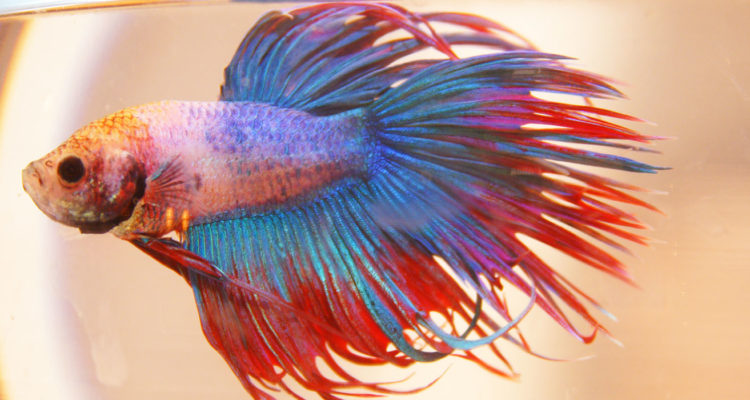Continue to feed your betta fry small amounts of food several times a day until they reach 8 weeks of age or until they grow to about 3/4 inch in length. Step 12 Separate the betta fry into individual jars or cups to continue raising them to maturity.
What Is The Feed And Grow Fish Beta Code
It’s Not ‘Just’ a Fish

Dr. Krista Keller has advice on the care and keeping of betta fish.
Known for their bright, beautiful coloration and elaborate fin displays, betta fish, more accurately called “Siamese fighting fish,” are a common household pet. These little beauties require specific care to ensure that they stay happy and healthy. Dr. Krista Keller, a veterinarian at the University of Illinois Veterinary Teaching Hospital in Urbana who is a board-certified specialist in zoological medicine, offers insights for owners of these pet fish.
Housing Your Betta
The first thing to consider for a betta fish is its environment.
“Betta fish are often seen living in bowls that are too small to allow for normal swimming and hiding behavior,” Dr. Keller says. “They should not live in bowls. Instead, they should ideally be in a 5-gallon glass or plastic tank or larger.” Having an environment of this size allows the betta fish to exhibit normal activity and have less buildup of toxins in their environment.
It can be fun to decorate a fish tank—there are so many different shapes, sizes, and colors of decorations found in pet stores and online. However, it is important to keep the betta fish in mind when choosing decorations.
“Decorations for a tank should never take up too much of the tank, pushing the fish to the periphery,” Dr. Keller says. Betta fish love to swim around and explore their entire tank. Many decorations also have sharp edges that can easily tear the delicate fins. Avoid these to keep the betta’s fins beautiful.
Water Quality and Temperature
Water quality is vital to the health of a fish. Toxins can build up over time from urine, feces, and break down of uneaten food in the water.
A filtration system that is low flow is preferred in their tank to keep the environment clean of toxins. A low-flow filter is vital to ensure that the fish’s delicate fins are not injured by the suction of a filter.
“Most people don’t realize that betta are tropical fish,” Dr. Keller explains. Their tank needs to be kept within a distinct range of 76°F to 81°F. Owners should measure the tank temperature with a thermometer. Because most homes are kept at a lower temperature, an in-tank water heater will be needed to maintain the temperature.
The type of water used in the tank matters too. Tap water contains harmful chemicals, such as chlorine and chloramine and sometimes heavy metals. These chemicals can cause immunosuppression or make the fish very sick.
“If tap water is used in the tank, it is recommended to use a dechlorinating product and test for heavy metals,” Dr. Keller explains. An alternative to tap water is bottled water, which is free of these harmful chemicals. However, distilled water should not be used as it lacks vital minerals that are important for fish health.
Time to Eat!
“Many resources may falsely claim that bettas can live off nibbling the roots of several plants,” Dr. Keller says. “This is not true!” Plants can provide enrichment for the fish to hide and explore, but plants are not a food source.


Betta fish are carnivores that eat insects and insect larvae. They should be fed a balanced pelleted or flaked food daily.
Just like cats and dogs, betta fish can be overfed, leading to obesity and other health issues.
Dr. Keller suggests that every day a betta fish should be given the amount of food it can eat within 3 to 5 minutes, without any food left over. Left-over food will sink to the bottom of the tank and lead to poor water quality.
“Betta fish can be given treats, too! They should be high-protein items such as bloodworms or brine shrimp fed live or freeze dried, and like all treats they should be given in moderation,” Dr. Keller explains.
Do They Get Lonely?
Betta fish are naturally territorial and should not be housed with any other betta fish because they will fight and injure each other, often resulting in death. They are unlikely to get lonely in their tank; however, if they are in a small tank, they may get bored.
“There are a variety of other species of tank mates that can be safely added to a betta’s tank, such as snails, ghost shrimp, certain species of fish, and African dwarf frogs,” Dr. Keller says. In order to add these friends, however, the size of the tank and filtration system must increase to keep everyone healthy and clean.
Betta Resources
Feed And Grow Fish Beta
There is a plethora of information available online about betta fish. Unfortunately, a lot of it is incomplete or inaccurate. Dr. Keller recommends the website Bettafish.org as a great resource for any betta fish questions.
“There are many types of family members. They don’t all have to be furry or fuzzy,” Dr. Keller says. “All family members deserve the same high level of care and treatment, so next time someone says, ‘It’s just a fish,’ you can reply, ‘this is MY fish!’”
If you have further questions about betta fish, visit Bettafish.org or contact a veterinarian who treats zoological companion animals.
By Beth Mueller
Feed And Grow Fish Beta Code
Feature image by Iva Balk from Pixabay



